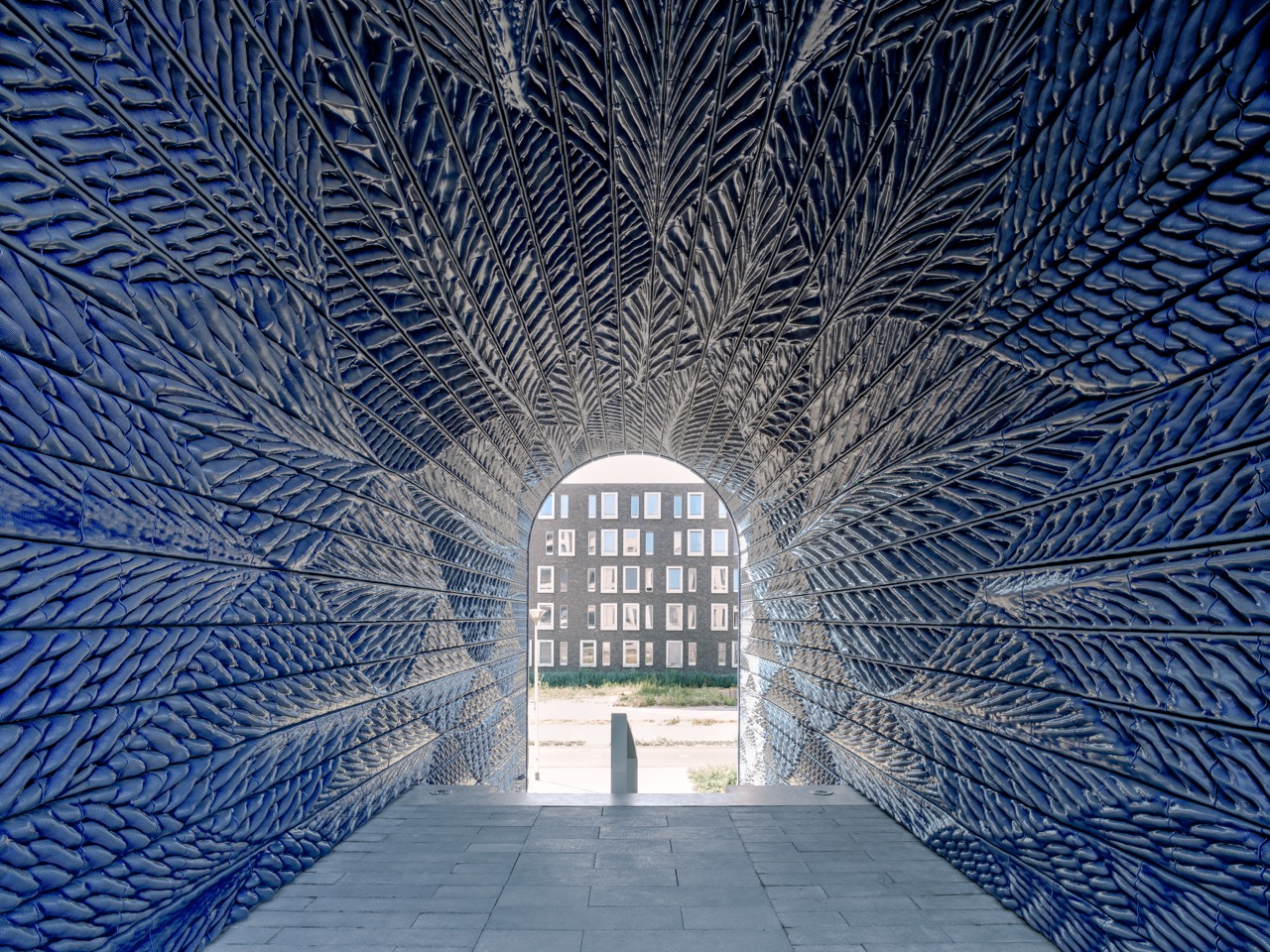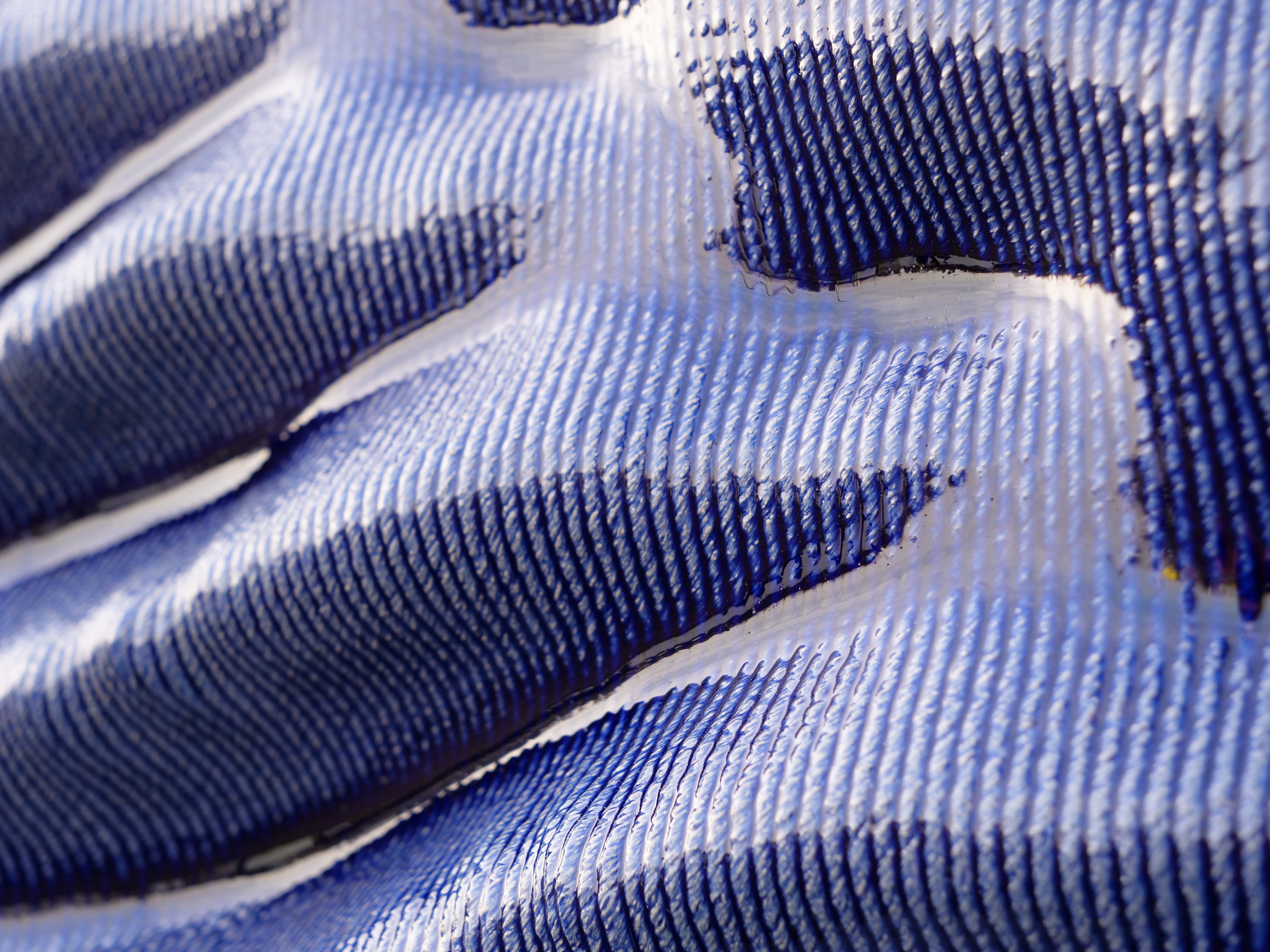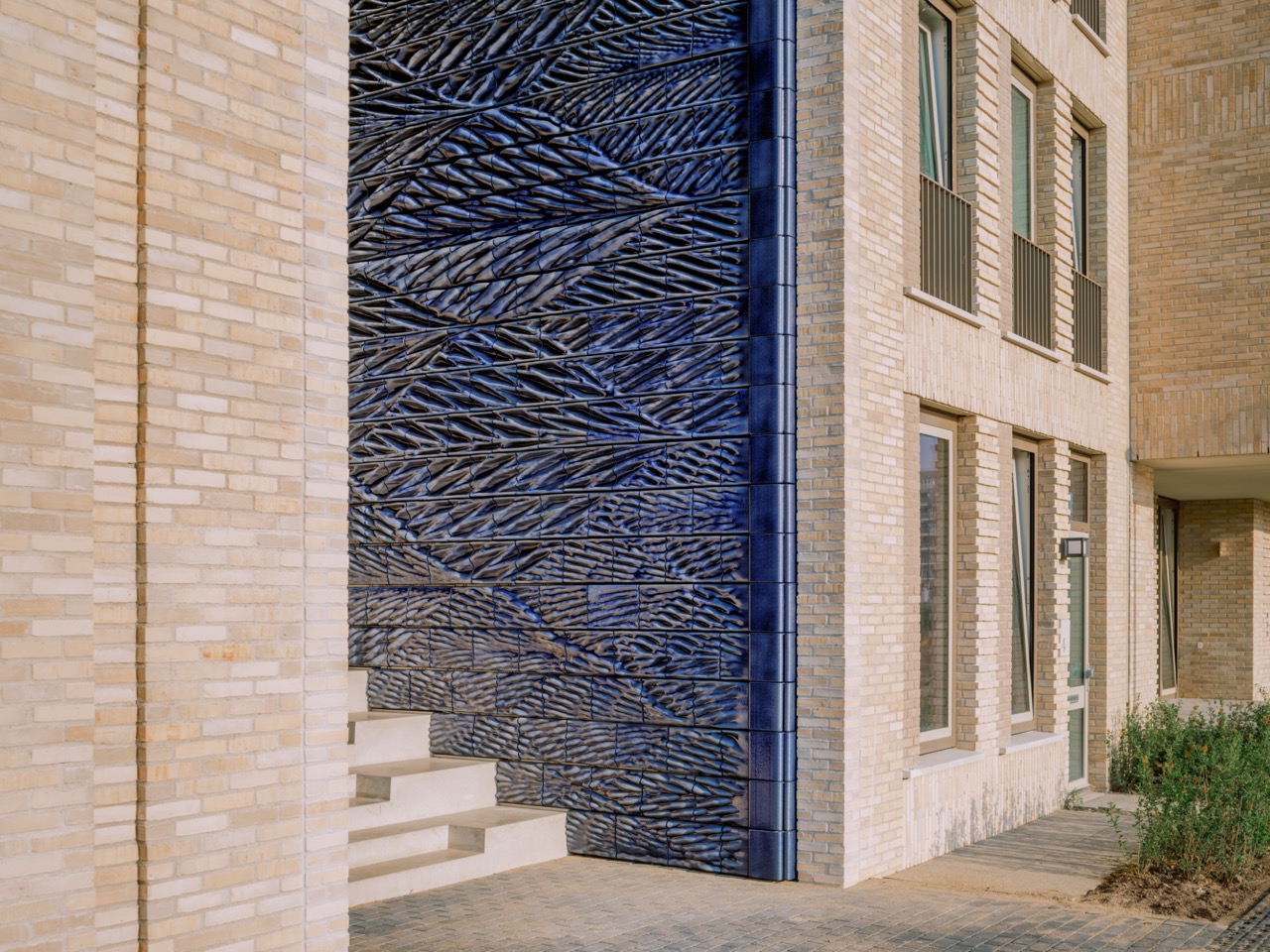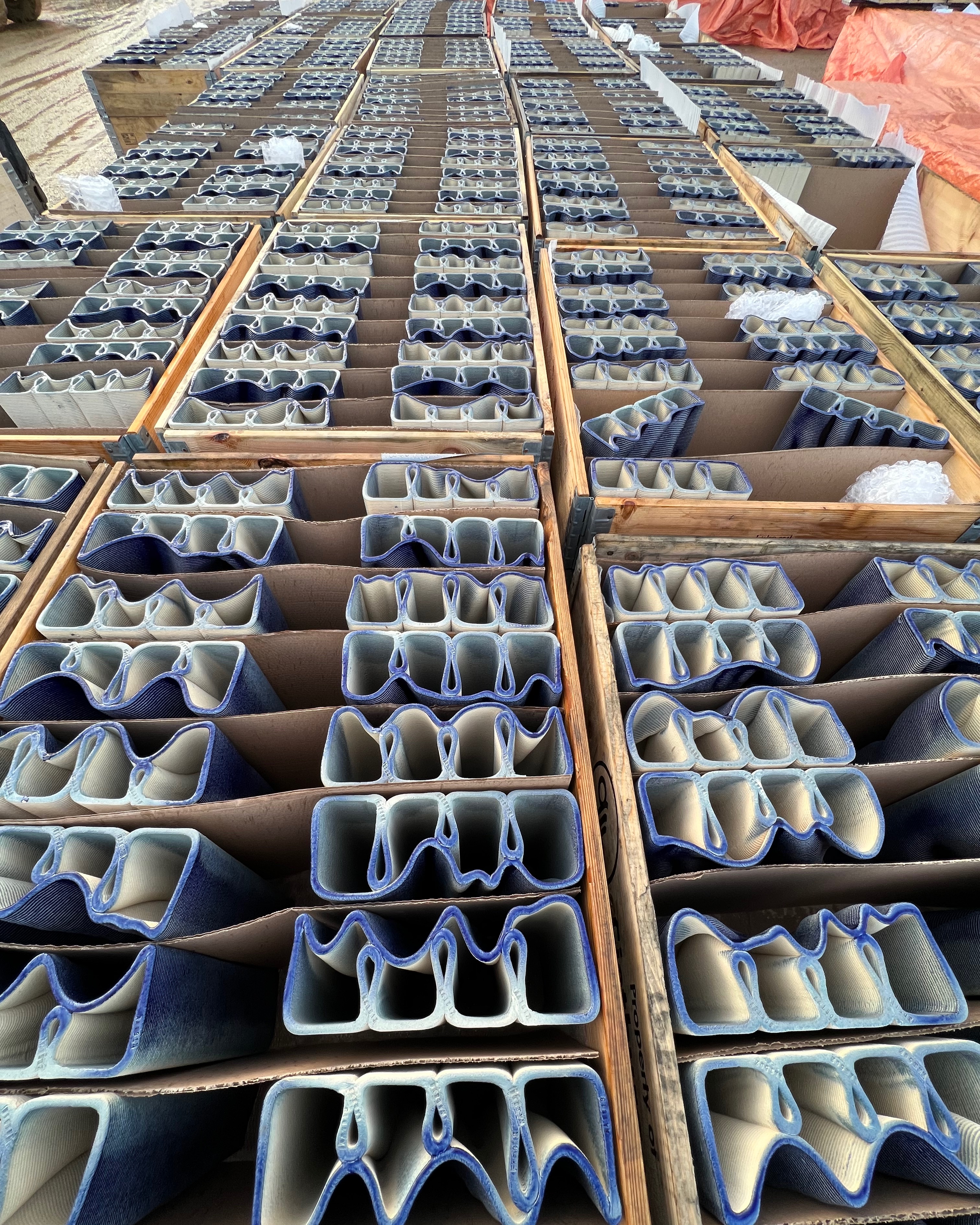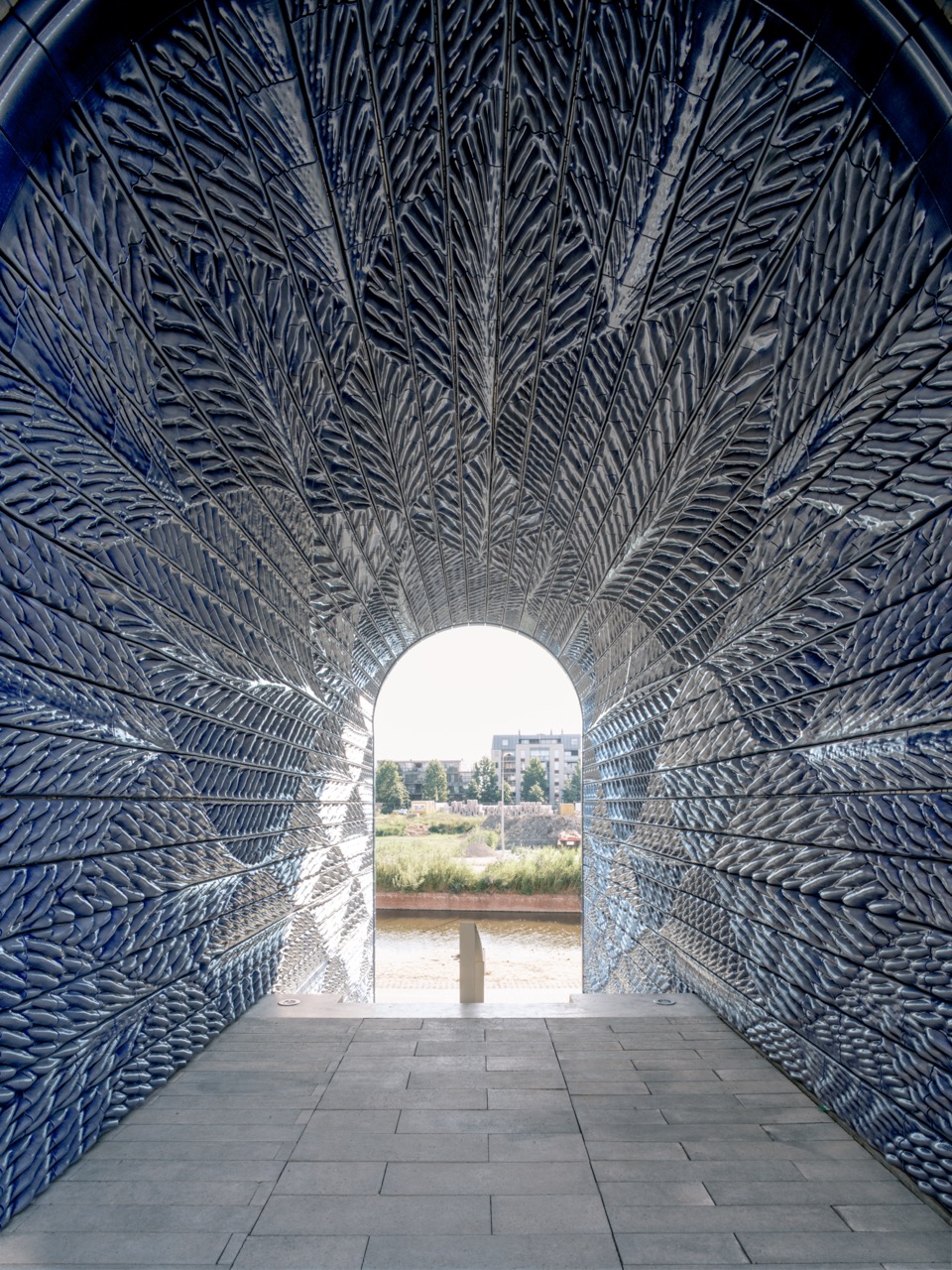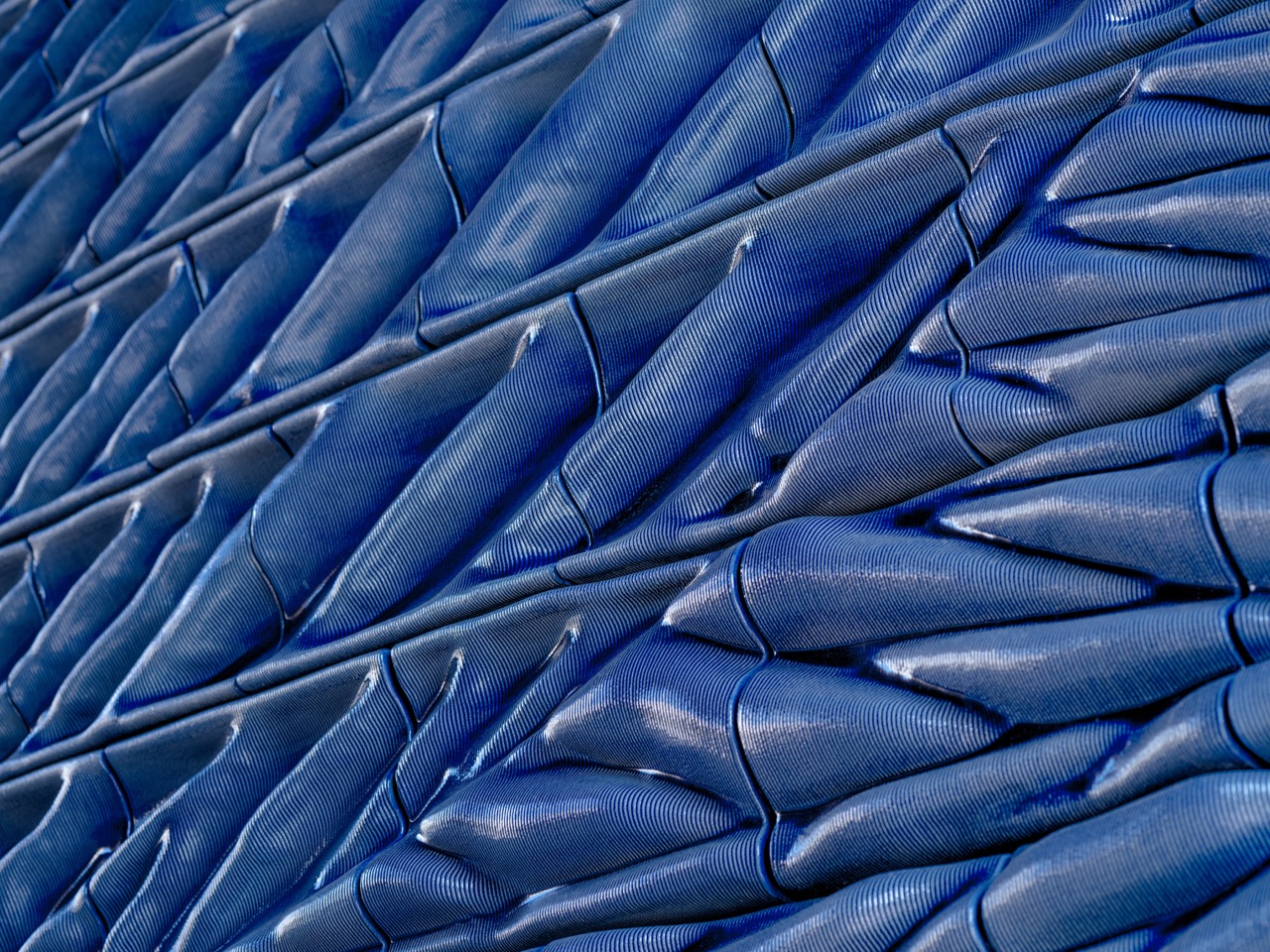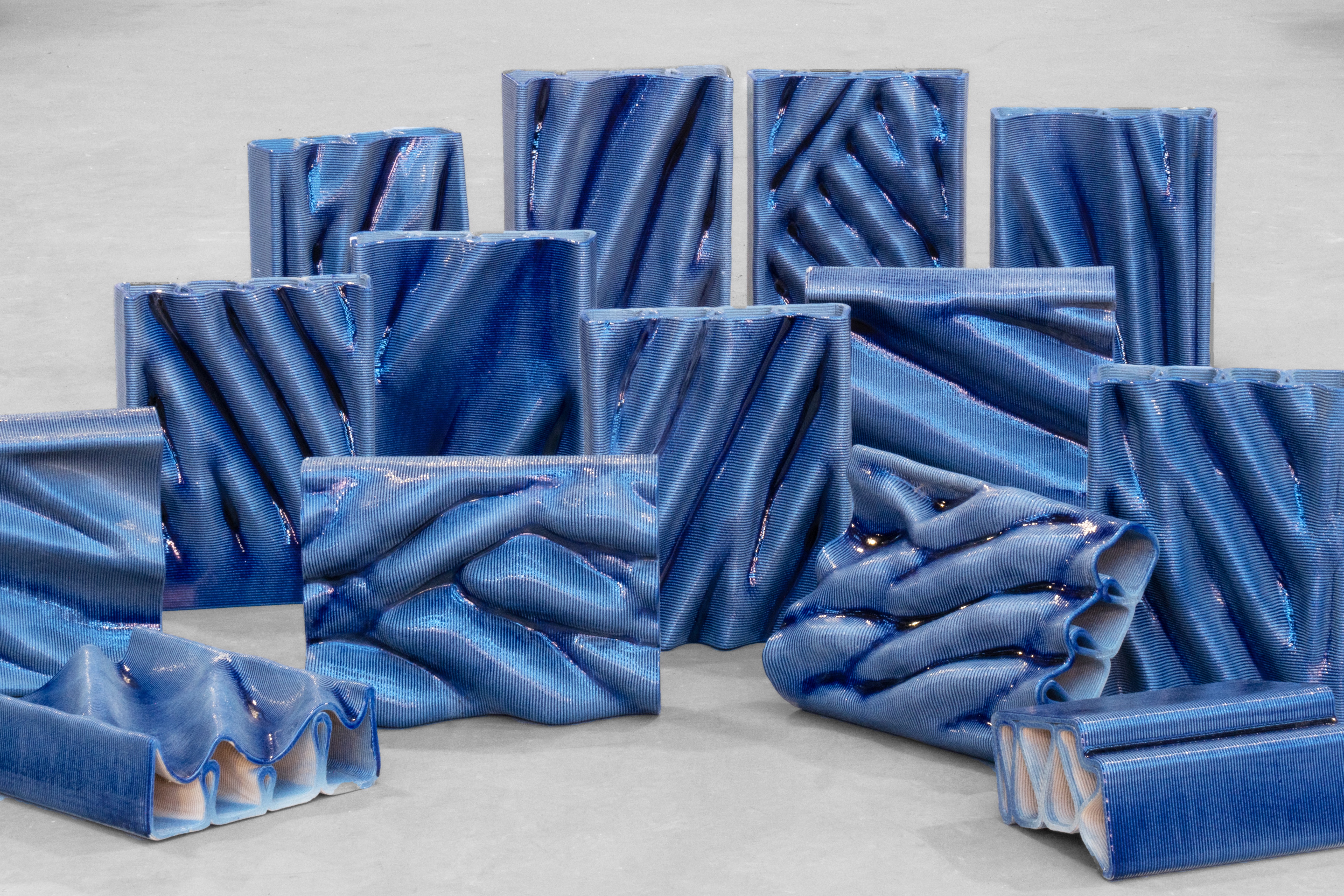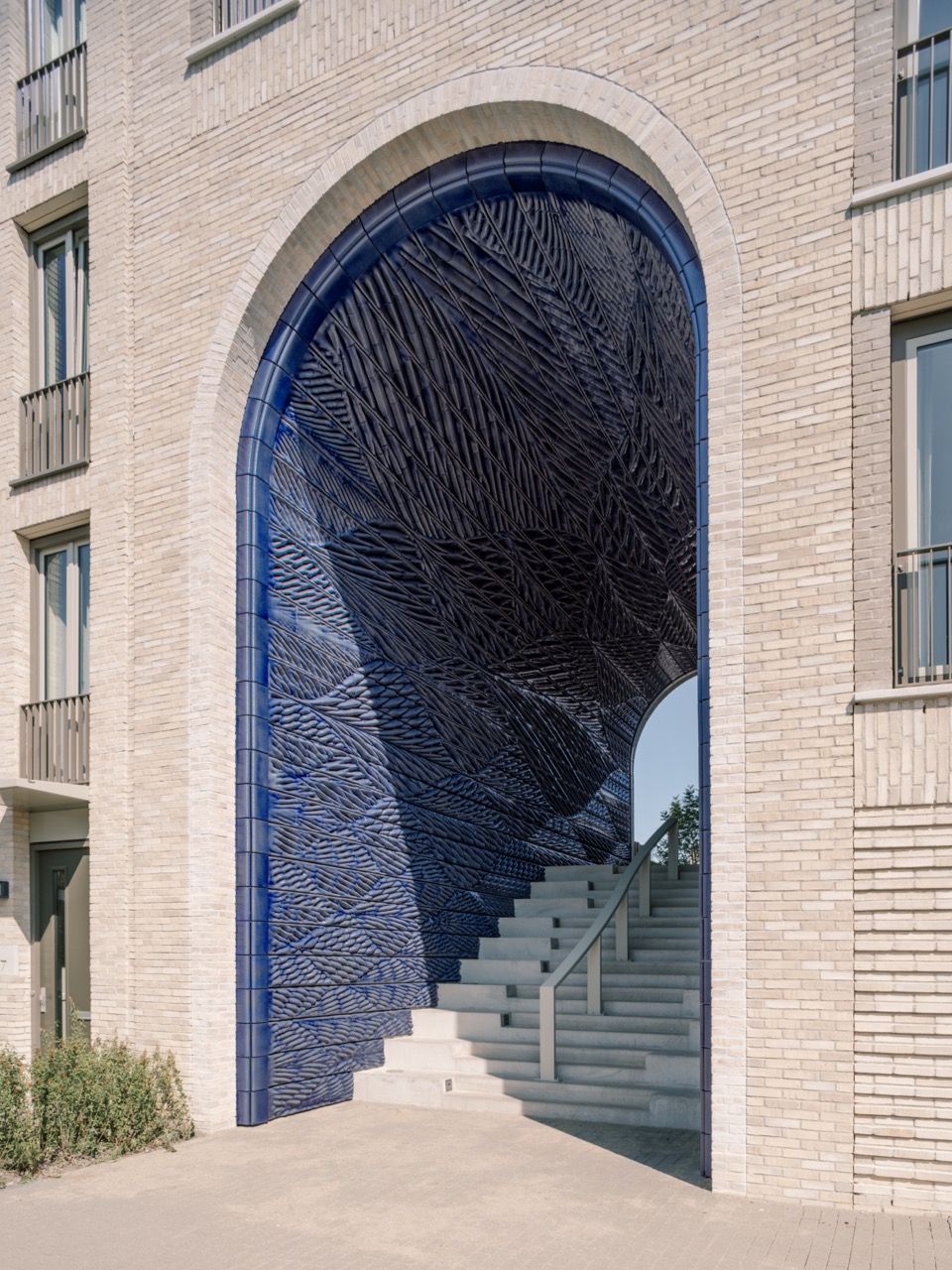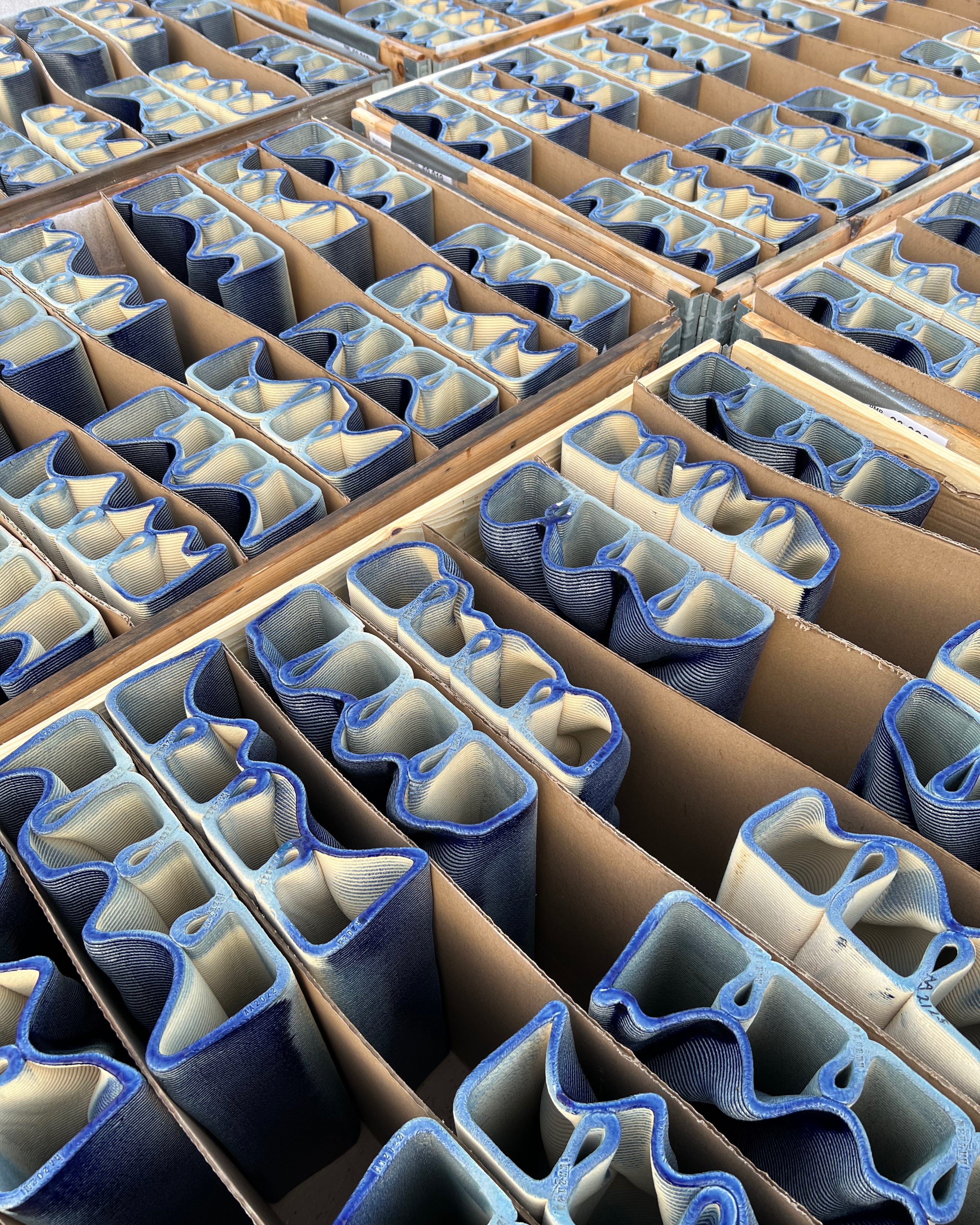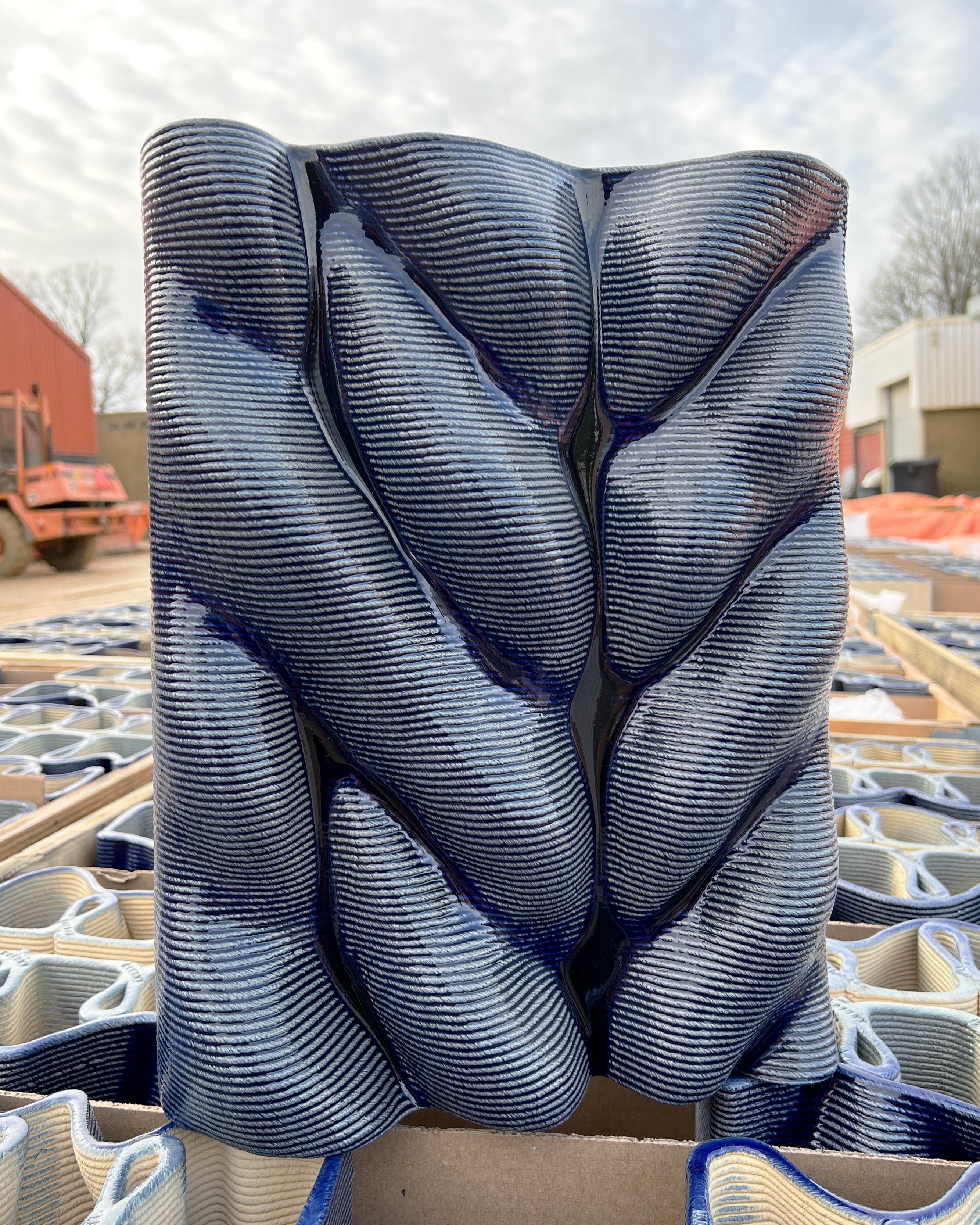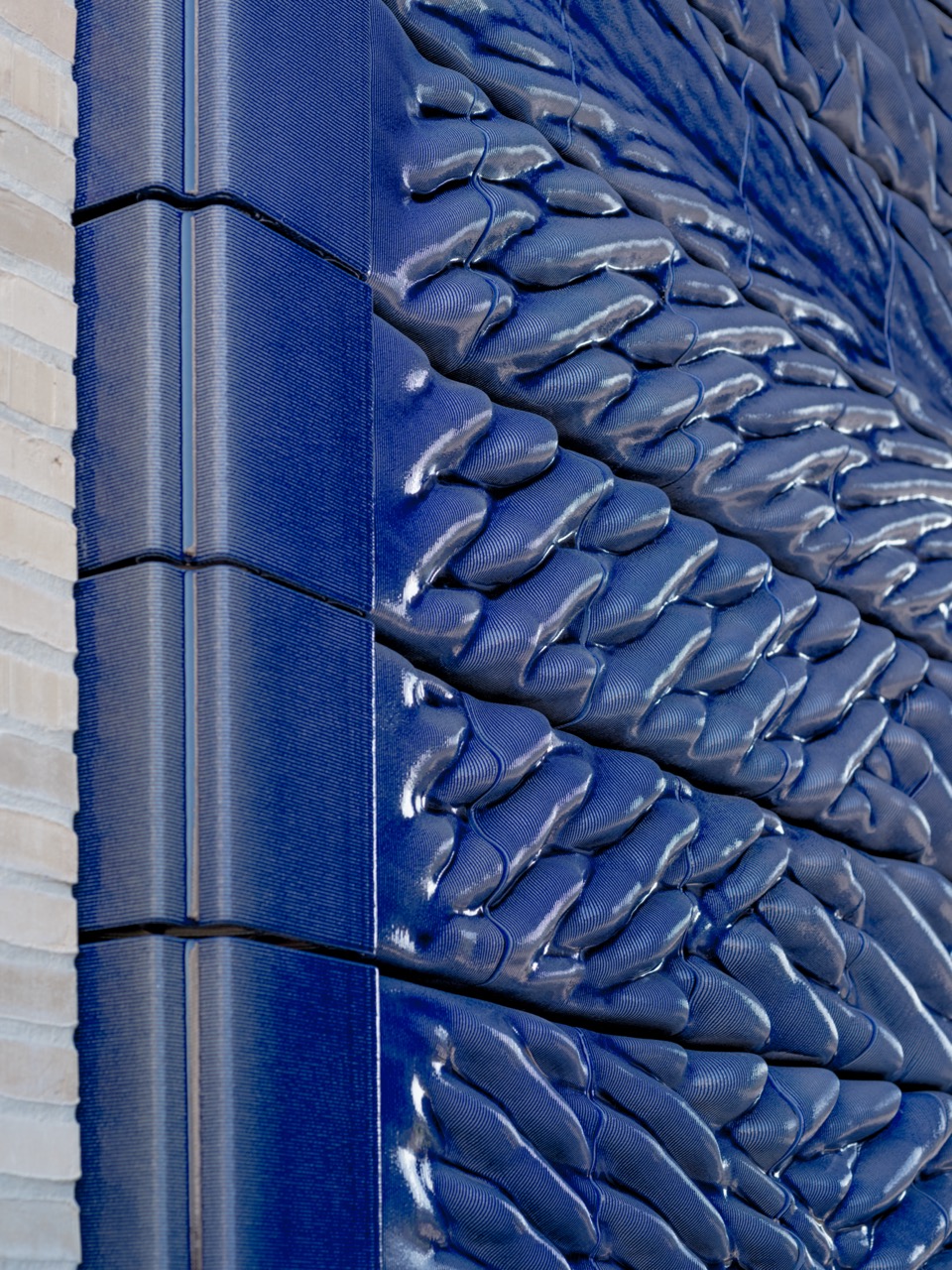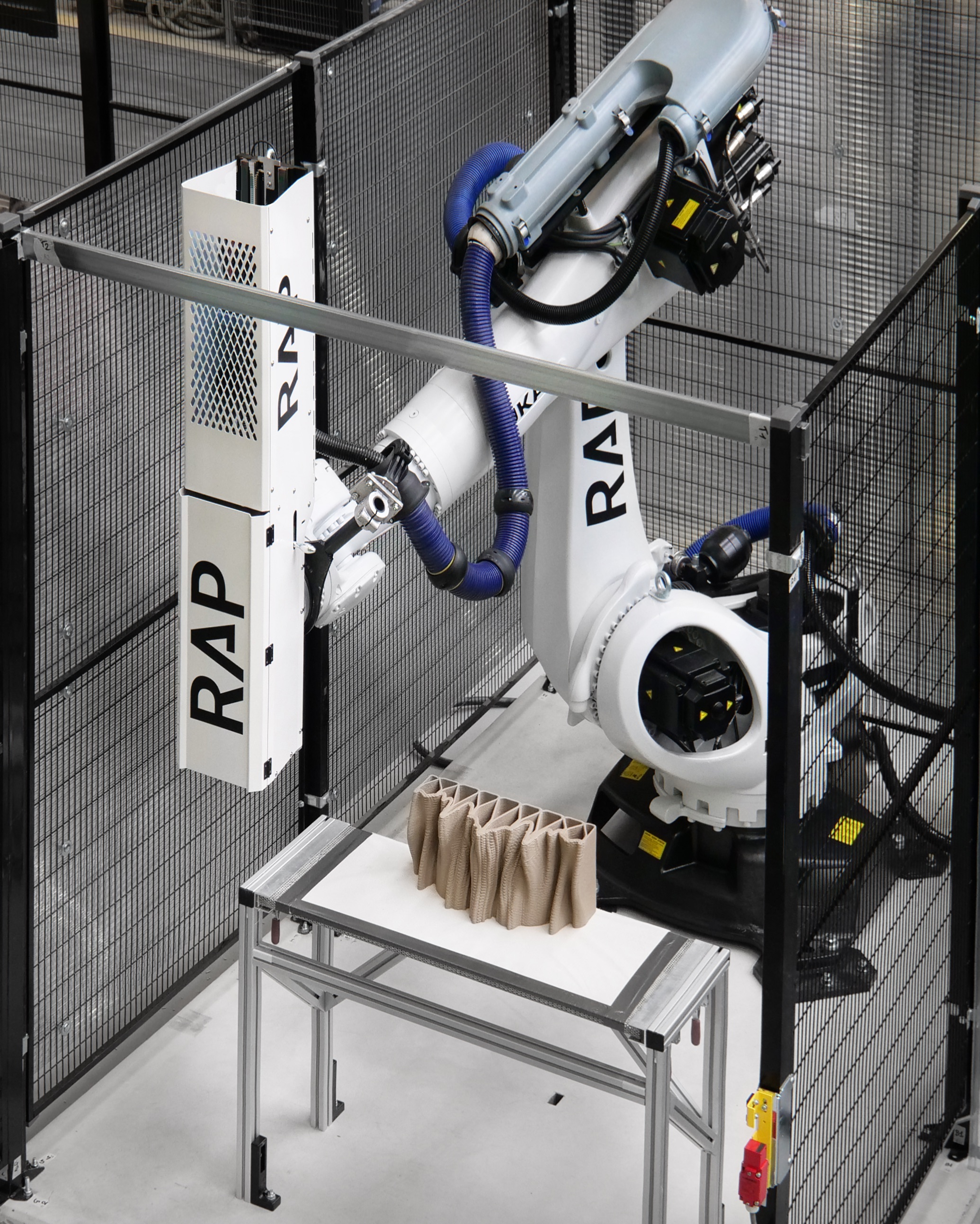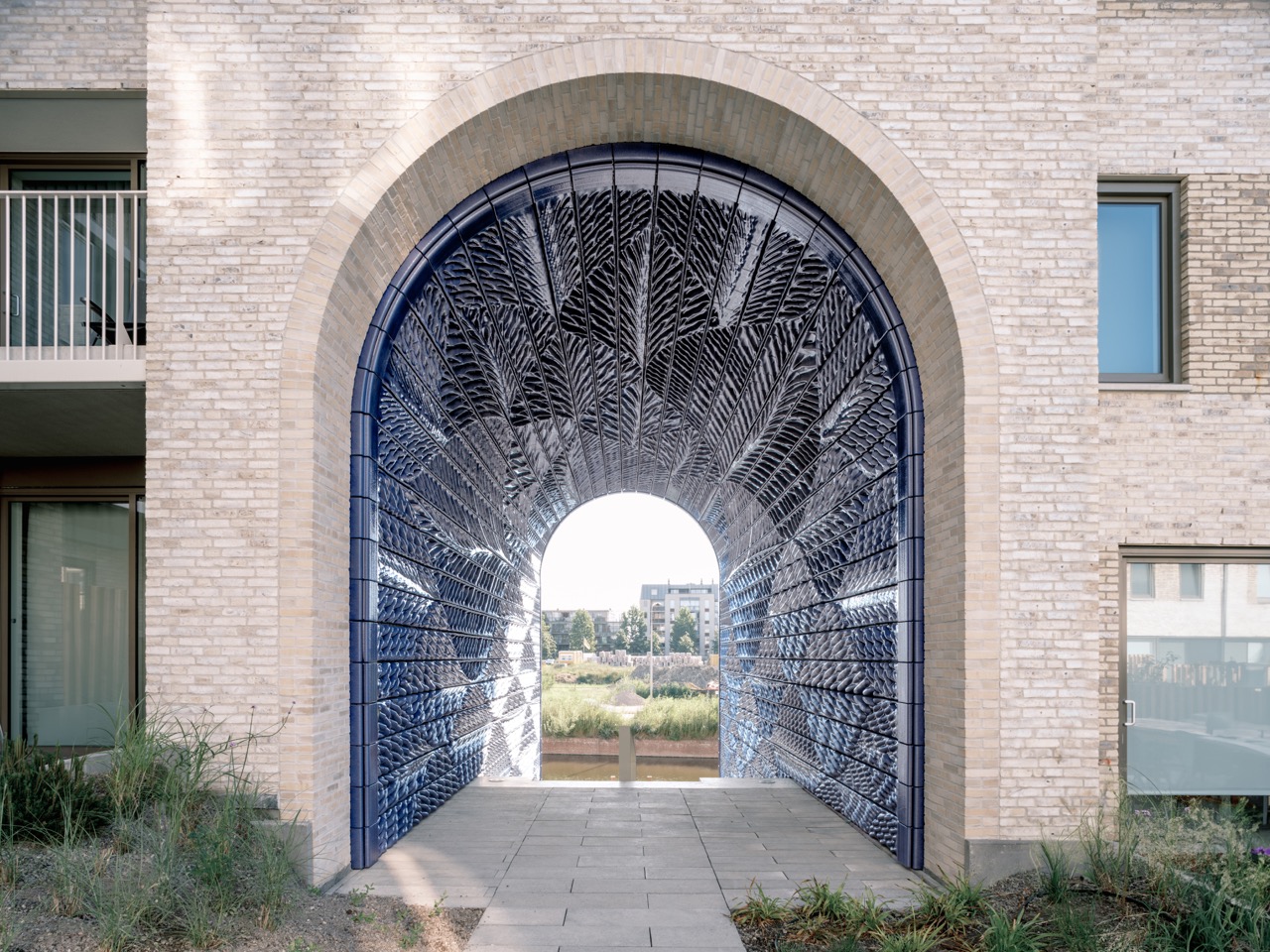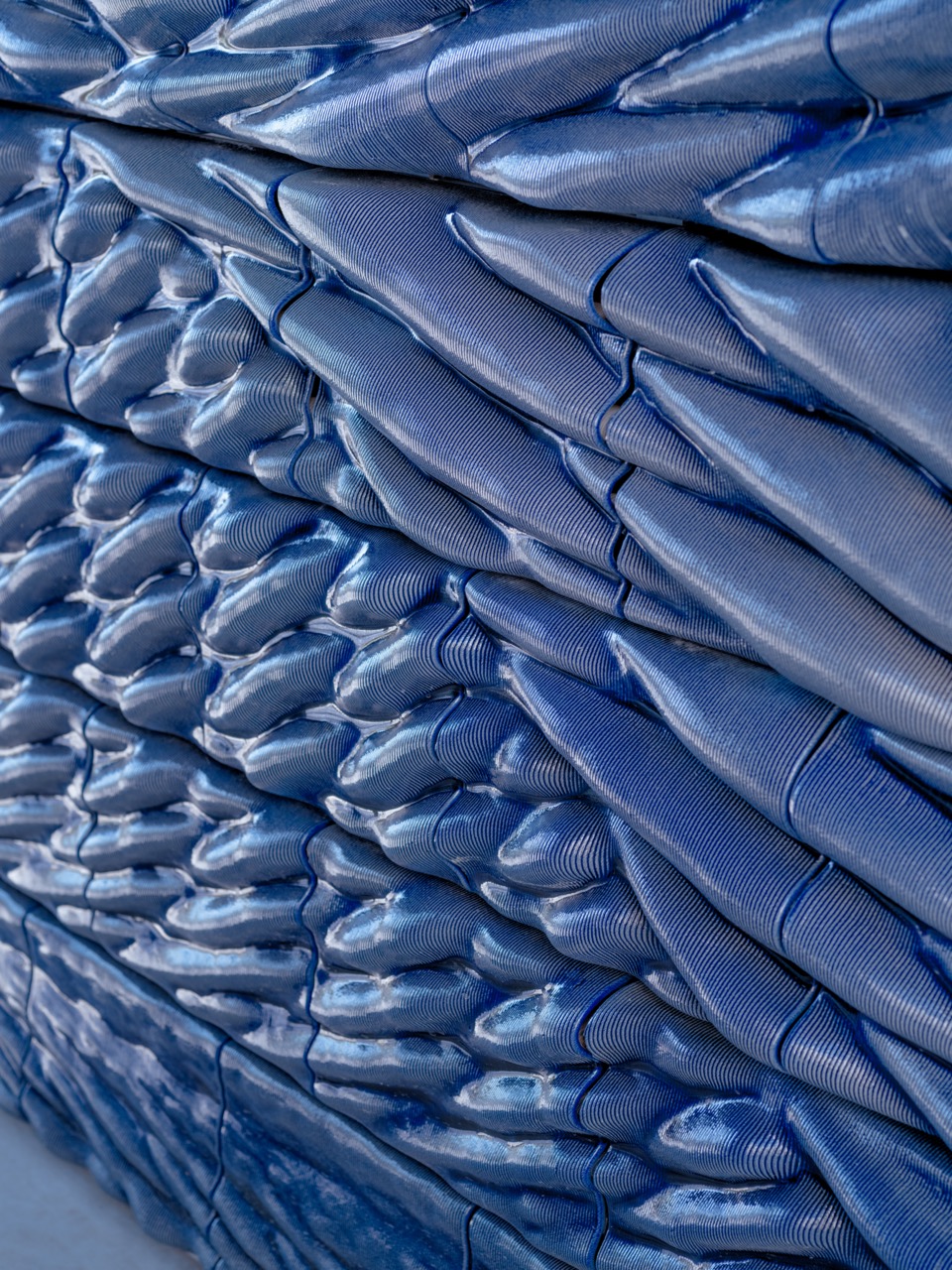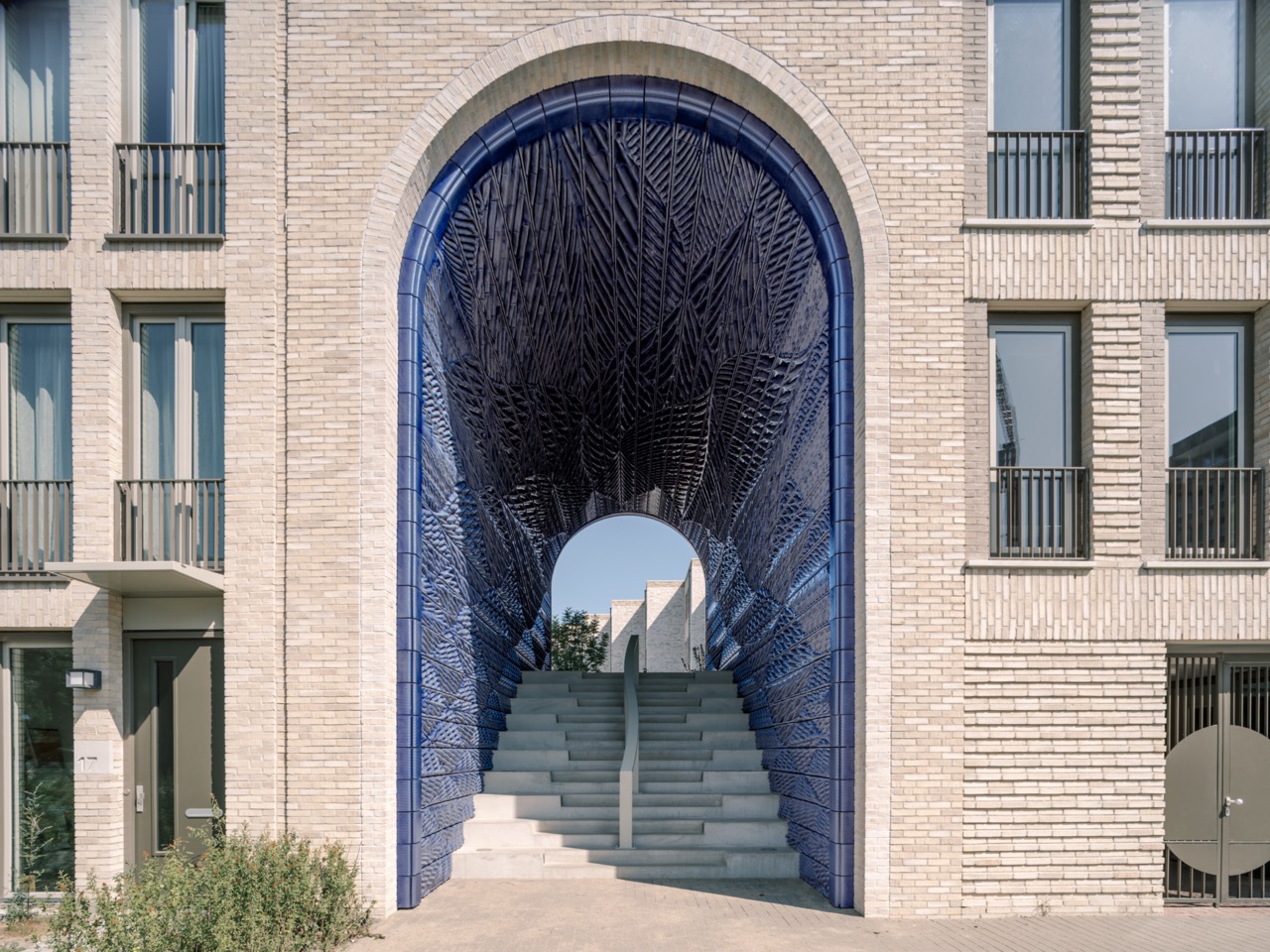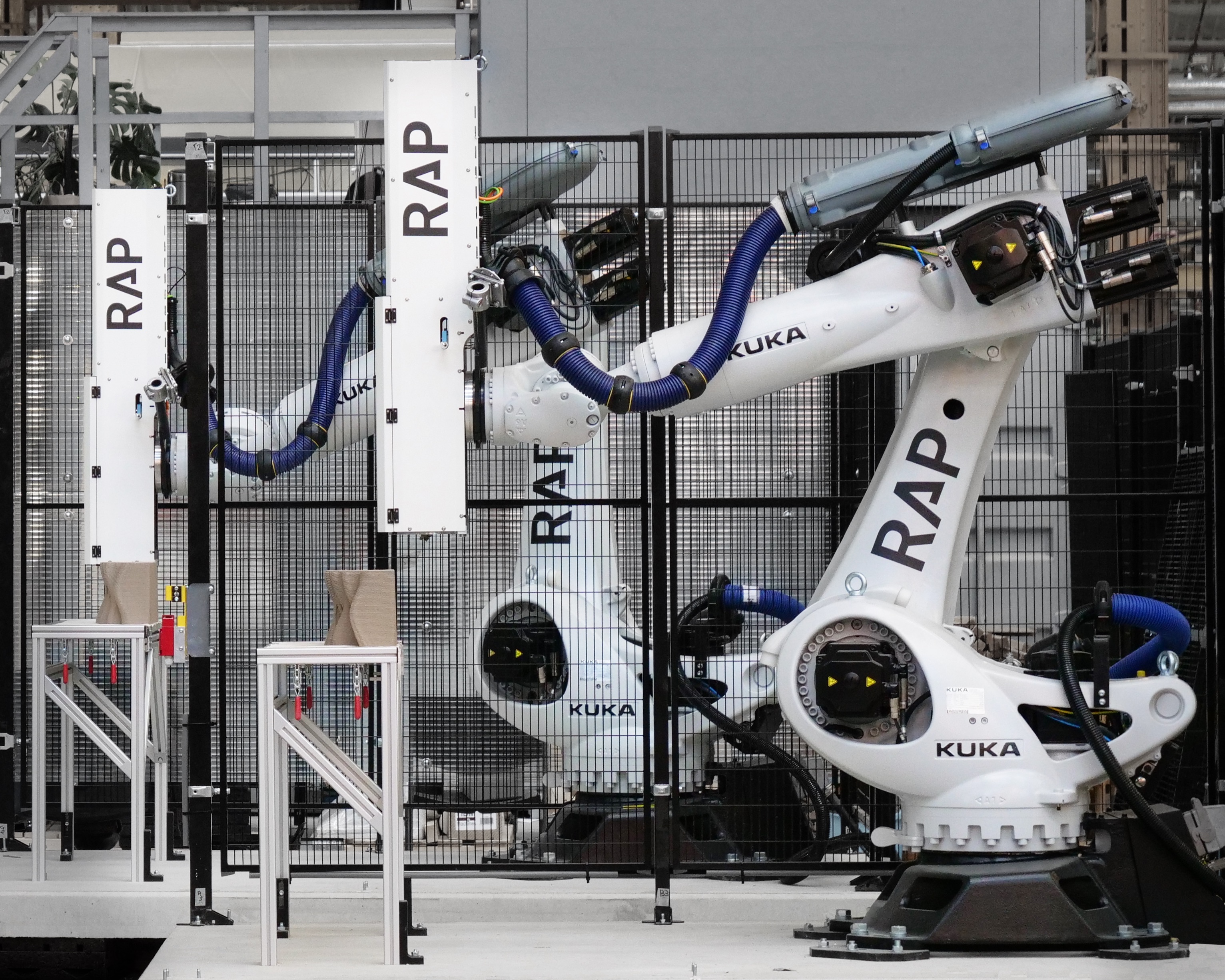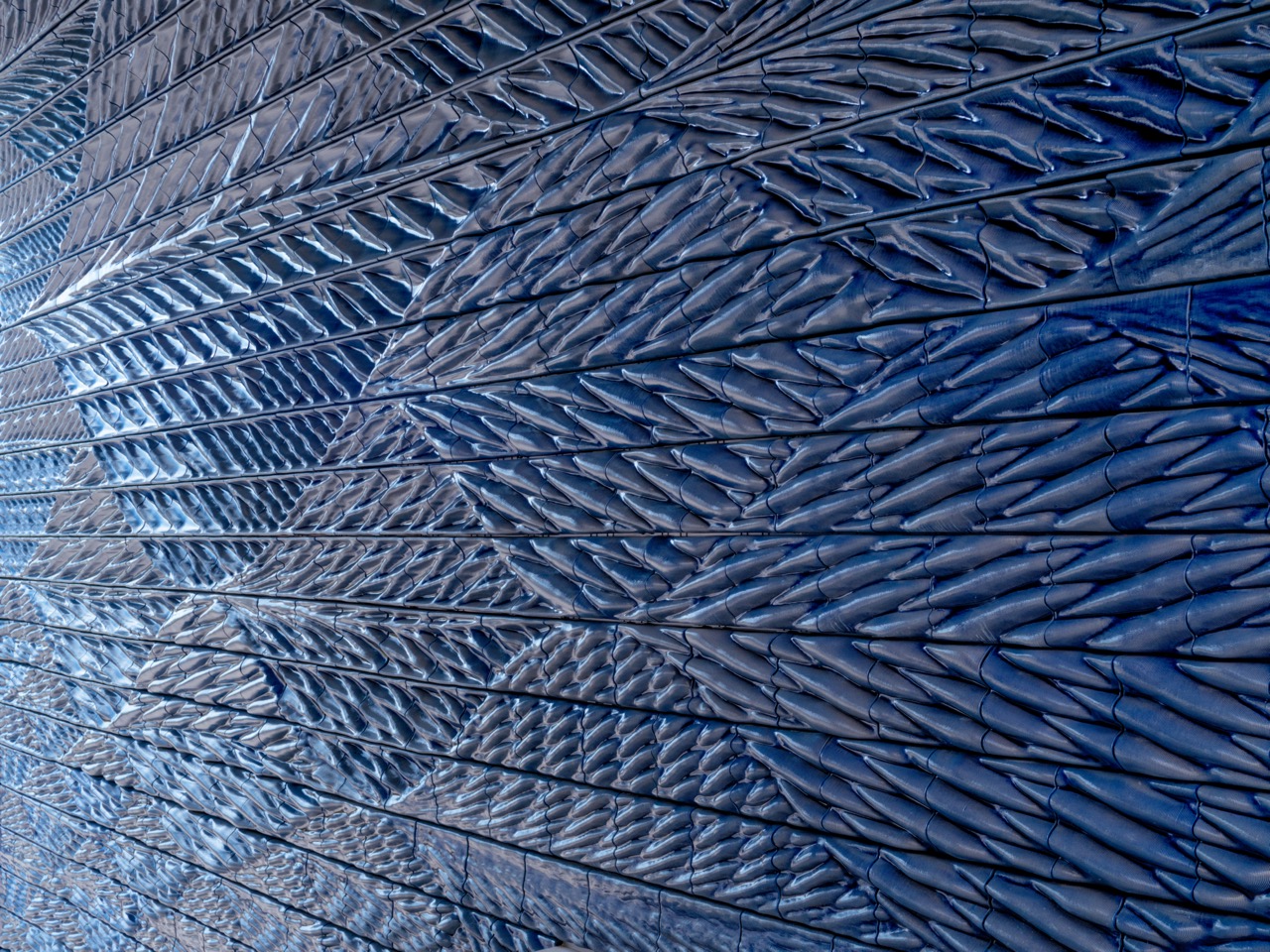Regaining a sense of belonging
New Delft Blue
New Delft Blue
New Delft Blue is a pioneering project in the historic Dutch city Delft, designed and 3D printed by Studio RAP. This project reinterprets the world-famous decorative qualities and design vocabulary of Delft Blue porcelain. By fusing 3D clay printing, computational design, and artisanal glazing, New Delft Blue unfolds a new architectural potential of ceramic ornamentation of the 21st century.
Netherlands
Local
Delft
Mainly urban
It refers to a physical transformation of the built environment (hard investment)
Yes
2023-06-07
No
No
No
As a representative of an organisation
The New Delft Blue project by Studio RAP located in Delft, the Netherlands revolutionizes architectural ceramic ornamentation through innovative design and fabrication techniques. This innovative project reinterprets the iconic Delft Blue porcelain, integrating 3D clay printing, computational design, and traditional glazing. The project features two large gates, each realized with approximately 3,000 ceramic tiles, showcasing a blend of historic and contemporary craftsmanship. These algorithmically designed and 3D printed tiles offer dynamic visual effects that mimic traditional Delft Blue hues and textures.
Studio RAP's New Delft Blue exemplifies the integration of digital innovations in modern architecture, promoting sustainability and minimizing environmental impact with high-end, durable tiles.Targeting both residents and visitors of Delft, the project enhances daily experiences by fostering a connection to the city’s rich historical narrative, thereby strengthening community ties. By reviving local heritage in a modern context, New Delft Blue enriches cultural appreciation and fosters a sense of belonging, making it a standout candidate in the 'Regaining a Sense of Belonging' category for the New European Bauhaus Prizes.
Studio RAP's New Delft Blue exemplifies the integration of digital innovations in modern architecture, promoting sustainability and minimizing environmental impact with high-end, durable tiles.Targeting both residents and visitors of Delft, the project enhances daily experiences by fostering a connection to the city’s rich historical narrative, thereby strengthening community ties. By reviving local heritage in a modern context, New Delft Blue enriches cultural appreciation and fosters a sense of belonging, making it a standout candidate in the 'Regaining a Sense of Belonging' category for the New European Bauhaus Prizes.
Innovation
Cultural
Artistic
Ornamentation
Heritage-inspired
The New Delft Blue project integrates sustainability by utilizing 40% recycled clay, reducing the demand for new raw materials and minimizing environmental impact. The tiles are designed to be durable, promoting a longer lifecycle and less frequent replacement. By employing 3D printing and computational design, the project minimizes waste and efficiently produces high-end, durable tiles. This process sets a benchmark for environmental responsibility in architectural design, demonstrating how traditional materials can be reimagined in sustainable, innovative ways. Additionally, the project is deeply context-based, enhancing its relevance to the local setting. This contextual sensitivity fosters a stronger sense of belonging among the community, leading to greater appreciation and longer-term preservation of the installation.
In terms of aesthetics, the New Delft Blue project revitalizes local heritage by combining digital fabrication with artisanal craftsmanship, creating gates that function as both architectural elements and dynamic artworks. The intricate, computationally designed patterns bring depth and variation, offering a changing visual experience depending on perspective and movement. This approach reintroduces ornamentation in a contemporary way, demonstrating how advanced fabrication techniques can enhance architectural expression.
The project pushes the boundaries of what is possible in architectural ornamentation today. The detailed ceramic surfaces interact with light and shadow, adding richness and visual complexity to the built environment. Beyond decoration, these elements contribute to a sense of place by connecting the structure to Delft’s cultural history. The project exemplifies how architectural design can move beyond functionality to create meaningful aesthetic experiences, reinforcing identity and belonging within the urban fabric.
The project pushes the boundaries of what is possible in architectural ornamentation today. The detailed ceramic surfaces interact with light and shadow, adding richness and visual complexity to the built environment. Beyond decoration, these elements contribute to a sense of place by connecting the structure to Delft’s cultural history. The project exemplifies how architectural design can move beyond functionality to create meaningful aesthetic experiences, reinforcing identity and belonging within the urban fabric.
The New Delft Blue project by Studio RAP focuses on enhancing inclusion through architectural innovations that are accessible and appealing to everyone in Delft. The project is open to the public, making it accessible to everyone. It utilizes 3D printed ceramic tiles to create large-scale entry gates, which allow for detailed ornamentation traditionally associated with labor-intensive craftsmanship. This innovative use of technology not only reduces production costs but also ensures the sustainability and broader accessibility of such detailed craftsmanship, adhering to 'design for all' principles.
These gates serve as more than mere architectural elements; they are cultural beacons that present Delft's rich heritage through contemporary interpretations of classic designs, making the local culture visible and accessible to all community members. This method fosters a shared sense of heritage and belonging, essential for inclusive community building.
Studio RAP, recognized as a world leader in 3D printing, utilizes its expertise to democratize access to cultural expression and architectural beauty, making the project an exemplary model for integrating inclusivity into urban development. As an SME, Studio RAP brings production back to Europe, reducing environmental impact and promoting community involvement and accessibility in design. This approach provides a blueprint for future urban planning that seamlessly combines cultural depth with inclusivity.
These gates serve as more than mere architectural elements; they are cultural beacons that present Delft's rich heritage through contemporary interpretations of classic designs, making the local culture visible and accessible to all community members. This method fosters a shared sense of heritage and belonging, essential for inclusive community building.
Studio RAP, recognized as a world leader in 3D printing, utilizes its expertise to democratize access to cultural expression and architectural beauty, making the project an exemplary model for integrating inclusivity into urban development. As an SME, Studio RAP brings production back to Europe, reducing environmental impact and promoting community involvement and accessibility in design. This approach provides a blueprint for future urban planning that seamlessly combines cultural depth with inclusivity.
In the New Delft Blue project, the development was primarily managed by Studio RAP in collaboration with the building's architects and other key stakeholders. This project has had a noticeable impact on the residents of Delft, enhancing their sense of connection to the city's heritage.
The New Delft Blue project was primarily managed by Studio RAP in collaboration with the building's architects and other key stakeholders. This initiative has noticeably enhanced the connection of Delft's residents to their city's heritage.
The design of the gates, inspired by traditional Delft Blue porcelain, artfully integrates Delft’s historical artistry within a modern architectural framework. This allows residents to experience a piece of the city’s cultural legacy in their everyday environment. Additionally, these gates are crafted using advanced 3D printing technology, establishing a strong link with Delft's technological landscape, home to a renowned technical university. This approach not only honors the city’s rich history but also underscores its status as a hub of technological innovation.
By reinterpreting Delft’s historical porcelain in contemporary design, the project has subtly reinforced community ties and pride. Residents view these gates not just as functional elements but as enduring symbols of Delft’s cultural identity and its continuous evolution.
Although the community did not participate directly in the design process, the installation of these gates has positively impacted local sentiments, fostering a renewed appreciation for the city's artistic heritage. This effect highlights the project’s ability to respectfully bridge tradition with modern design.
The New Delft Blue project was primarily managed by Studio RAP in collaboration with the building's architects and other key stakeholders. This initiative has noticeably enhanced the connection of Delft's residents to their city's heritage.
The design of the gates, inspired by traditional Delft Blue porcelain, artfully integrates Delft’s historical artistry within a modern architectural framework. This allows residents to experience a piece of the city’s cultural legacy in their everyday environment. Additionally, these gates are crafted using advanced 3D printing technology, establishing a strong link with Delft's technological landscape, home to a renowned technical university. This approach not only honors the city’s rich history but also underscores its status as a hub of technological innovation.
By reinterpreting Delft’s historical porcelain in contemporary design, the project has subtly reinforced community ties and pride. Residents view these gates not just as functional elements but as enduring symbols of Delft’s cultural identity and its continuous evolution.
Although the community did not participate directly in the design process, the installation of these gates has positively impacted local sentiments, fostering a renewed appreciation for the city's artistic heritage. This effect highlights the project’s ability to respectfully bridge tradition with modern design.
The New Delft Blue project benefited from the involvement of various stakeholders at different levels, ensuring its successful integration into Delft’s cultural landscape. Local authorities and heritage organizations played a key role in embedding the project within the city’s historical context, fostering community acceptance and engagement. Their input helped align the project with Delft’s cultural identity, making it a natural extension of the city’s architectural heritage.
At the national and European levels, the project gained recognition as an example of how traditional Dutch craftsmanship can merge with contemporary innovation. This broader support helped highlight the project’s significance beyond Delft, demonstrating its relevance in the ongoing dialogue about cultural preservation and modern design.
A key part of this collaboration was the involvement of Royal Tichelaar Makkum, one of the Netherlands’ oldest ceramic manufacturers. While one of many contributors, their expertise reinforced the project’s commitment to craftsmanship, ensuring that traditional glazing techniques were maintained alongside modern production methods. This balance between heritage and innovation not only preserved an important aspect of Dutch cultural identity but also demonstrated how traditional techniques can be adapted to contemporary applications, adding cultural and aesthetic value both locally and beyond.
At the national and European levels, the project gained recognition as an example of how traditional Dutch craftsmanship can merge with contemporary innovation. This broader support helped highlight the project’s significance beyond Delft, demonstrating its relevance in the ongoing dialogue about cultural preservation and modern design.
A key part of this collaboration was the involvement of Royal Tichelaar Makkum, one of the Netherlands’ oldest ceramic manufacturers. While one of many contributors, their expertise reinforced the project’s commitment to craftsmanship, ensuring that traditional glazing techniques were maintained alongside modern production methods. This balance between heritage and innovation not only preserved an important aspect of Dutch cultural identity but also demonstrated how traditional techniques can be adapted to contemporary applications, adding cultural and aesthetic value both locally and beyond.
Studio RAP, as both a design and fabrication firm, successfully managed and integrated the expertise of various stakeholders to bring the New Delft Blue project to life. By coordinating multiple disciplines, the firm ensured a seamless balance between innovation and tradition, creating a project that is both technologically advanced and deeply rooted in Delft’s cultural heritage.
The project involved expertise from several fields. Architecture and urban planning guided the integration of the gates into the city’s built environment, ensuring that they complemented the surrounding urban fabric. Digital fabrication played a crucial role in enabling the precise and efficient production of the ceramic tiles through advanced 3D printing techniques. In collaboration with Royal Tichelaar Makkum, the project incorporated traditional craftsmanship in the glazing and finishing of the tiles, preserving the artistic and historical significance of Delft Blue ceramics. Additionally, cultural heritage management ensured that the project respected Delft’s rich history, reinforcing the connection between past and present.
By bringing together these diverse disciplines, Studio RAP fostered a collaborative environment where technical innovation and historical craftsmanship worked in harmony. This multidisciplinary approach not only optimized the design and execution of the project but also safeguarded its cultural integrity. The realization of New Delft Blue demonstrates Studio RAP’s ability to lead complex, culturally significant projects, offering a model for integrating traditional arts into contemporary architectural applications.
The project involved expertise from several fields. Architecture and urban planning guided the integration of the gates into the city’s built environment, ensuring that they complemented the surrounding urban fabric. Digital fabrication played a crucial role in enabling the precise and efficient production of the ceramic tiles through advanced 3D printing techniques. In collaboration with Royal Tichelaar Makkum, the project incorporated traditional craftsmanship in the glazing and finishing of the tiles, preserving the artistic and historical significance of Delft Blue ceramics. Additionally, cultural heritage management ensured that the project respected Delft’s rich history, reinforcing the connection between past and present.
By bringing together these diverse disciplines, Studio RAP fostered a collaborative environment where technical innovation and historical craftsmanship worked in harmony. This multidisciplinary approach not only optimized the design and execution of the project but also safeguarded its cultural integrity. The realization of New Delft Blue demonstrates Studio RAP’s ability to lead complex, culturally significant projects, offering a model for integrating traditional arts into contemporary architectural applications.
The New Delft Blue project by Studio RAP redefines architectural ceramics by merging advanced digital fabrication with traditional craftsmanship, setting it apart from mainstream industry practices. Through 3D printing, the project creates individually designed ceramic tiles, moving beyond conventional manual production and static molds to allow greater precision and design flexibility. Algorithmic design further optimizes the tile patterns, introducing a level of customization rarely seen in traditional ceramics.
By reinterpreting the Delft Blue aesthetic within a modern architectural framework, the project revitalizes a historic art form while preserving its cultural essence. Unlike conventional approaches that separate tradition from technology, New Delft Blue seamlessly integrates both, demonstrating how digital fabrication can enhance and expand upon heritage craftsmanship. This innovative approach not only pushes the boundaries of ceramic design but also presents a scalable model for producing architectural elements that are both historically rooted and forward-thinking.
By reinterpreting the Delft Blue aesthetic within a modern architectural framework, the project revitalizes a historic art form while preserving its cultural essence. Unlike conventional approaches that separate tradition from technology, New Delft Blue seamlessly integrates both, demonstrating how digital fabrication can enhance and expand upon heritage craftsmanship. This innovative approach not only pushes the boundaries of ceramic design but also presents a scalable model for producing architectural elements that are both historically rooted and forward-thinking.
The New Delft Blue project by Studio RAP merges traditional ceramic craftsmanship with advanced digital fabrication, creating a highly adaptable approach to architectural design. Extensive research into Delft Blue porcelain informed the design process, ensuring historical authenticity while reimagining traditional motifs for a contemporary context.
The project allows for fully customizable and context-aware ornamentation. This precision-driven approach enables intricate, site-specific patterns that seamlessly integrate into their surroundings. Unlike traditional ceramic production, which relies on fixed molds, this method offers flexibility in design while maintaining efficiency and consistency.
The tiles were coated with a specially formulated glaze that enhances durability while preserving the depth and richness of Delft Blue hues. After firing, they were assembled with careful consideration, ensuring longevity in the built environment.
The project demonstrates how digital fabrication can revitalize heritage crafts while adapting to different architectural contexts. This method not only preserves Delft’s ceramic legacy but also sets a new precedent for integrating cultural heritage into contemporary architecture through innovation and adaptability.
The project allows for fully customizable and context-aware ornamentation. This precision-driven approach enables intricate, site-specific patterns that seamlessly integrate into their surroundings. Unlike traditional ceramic production, which relies on fixed molds, this method offers flexibility in design while maintaining efficiency and consistency.
The tiles were coated with a specially formulated glaze that enhances durability while preserving the depth and richness of Delft Blue hues. After firing, they were assembled with careful consideration, ensuring longevity in the built environment.
The project demonstrates how digital fabrication can revitalize heritage crafts while adapting to different architectural contexts. This method not only preserves Delft’s ceramic legacy but also sets a new precedent for integrating cultural heritage into contemporary architecture through innovation and adaptability.
The New Delft Blue project by Studio RAP demonstrates a highly adaptable methodology that successfully integrates cultural heritage into contemporary architecture. By combining computational design, 3D printing, and traditional craftsmanship, the approach allows for unique, site-specific designs while remaining transferable. This adaptability has been proven through two similar projects in Amsterdam and Dubai, showcasing its versatility across different cultural and architectural contexts.
Computational design and 3D printing enable intricate, locally inspired patterns without the limitations of traditional mold-based production. This process allows for high customization, ensuring that each project responds to its specific environment. Sustainability is also a key factor, with the use of recycled materials and waste-minimizing production aligning with environmentally responsible design.
Originally developed for Delft, this approach ensures that each project is tailored to its cultural setting. By successfully applying the methodology in multiple locations, Studio RAP has demonstrated how digital fabrication can preserve and reinterpret heritage globally, offering a scalable model for adaptable, context-driven architectural ornamentation.
Computational design and 3D printing enable intricate, locally inspired patterns without the limitations of traditional mold-based production. This process allows for high customization, ensuring that each project responds to its specific environment. Sustainability is also a key factor, with the use of recycled materials and waste-minimizing production aligning with environmentally responsible design.
Originally developed for Delft, this approach ensures that each project is tailored to its cultural setting. By successfully applying the methodology in multiple locations, Studio RAP has demonstrated how digital fabrication can preserve and reinterpret heritage globally, offering a scalable model for adaptable, context-driven architectural ornamentation.
The New Delft Blue project by Studio RAP addresses global challenges through locally grounded solutions, offering a model for sustainability, cultural preservation, and urban development. The project prioritizes sustainability by using recycled materials and minimizing waste, aligning with circular economy principles. It also preserves cultural heritage by reinterpreting Delft Blue ceramics through contemporary methods, ensuring its relevance in modern architecture. As urbanization accelerates, the project strengthens community identity by integrating cultural elements into the built environment, fostering a sense of belonging.
The project introduces innovative techniques that enhance design flexibility and efficiency. By combining heritage with technology, New Delft Blue demonstrates how local craftsmanship can be adapted for modern contexts, providing a scalable model for cities worldwide seeking to preserve tradition while embracing innovation.
The project introduces innovative techniques that enhance design flexibility and efficiency. By combining heritage with technology, New Delft Blue demonstrates how local craftsmanship can be adapted for modern contexts, providing a scalable model for cities worldwide seeking to preserve tradition while embracing innovation.
As a front runner in 3D ceramic printing, Studio RAP is the only entity in the world capable of executing this level of craftsmanship with ceramics, setting it apart as a leader in architectural ceramics. This positions the project perfectly within the "Regaining a Sense of Belonging" category for the New European Bauhaus Prizes by revitalizing Delft Blue ceramics through advanced 3D printing, setting new standards and making traditional craftsmanship relevant in a modern context.
The project has not only enriched Delft’s urban landscape by introducing artistically designed ceramic gates that improve the city’s visual identity but has also enhanced the daily experience for its residents. It strengthens local pride and cultural connection while equipping artisans with new skills in digital fabrication. Furthermore, the initiative boosts Delft’s appeal as a cultural destination, benefiting both tourism and the local economy.
Studio RAP's work demonstrates how traditional crafts can be reimagined with digital techniques, serving as an inspiration for other SMEs across Europe to consider bringing production back to the continent. This innovative approach offers valuable insights for urban planners and designers, showcasing a scalable way to enhance cultural identity while embracing modern fabrication methods.
The project has not only enriched Delft’s urban landscape by introducing artistically designed ceramic gates that improve the city’s visual identity but has also enhanced the daily experience for its residents. It strengthens local pride and cultural connection while equipping artisans with new skills in digital fabrication. Furthermore, the initiative boosts Delft’s appeal as a cultural destination, benefiting both tourism and the local economy.
Studio RAP's work demonstrates how traditional crafts can be reimagined with digital techniques, serving as an inspiration for other SMEs across Europe to consider bringing production back to the continent. This innovative approach offers valuable insights for urban planners and designers, showcasing a scalable way to enhance cultural identity while embracing modern fabrication methods.

